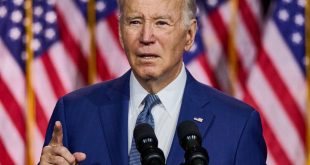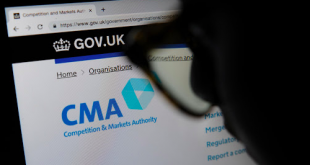 Andy MacKenzie, Marketing Communications Manager for sports and financial betting company Spreadex – the only bookmaker to offer fixed odds and spread betting from one account, sees what markets are available for the political punter.
Andy MacKenzie, Marketing Communications Manager for sports and financial betting company Spreadex – the only bookmaker to offer fixed odds and spread betting from one account, sees what markets are available for the political punter.
For most people, the General Election on May 7th will be a case of considering important issues such as education, immigration, the NHS and austerity to help improve the state of the nation. But for some wily traders and punters it will be another opportunity to try and turn a profit by predicting the results of what is widely perceived as being one of the most close-run General Elections in recent times.
So just how can canny investors go about trying to do just that? Here we look at five types of bets on the General Election.
1. Predicting the amount of seats to be won by the major parties
Regardless of the final result, some traders will be carefully analysing just exactly how many seats they think the Conservatives and Labour will poll come May 7th. The reason for this is because they will be taking on the spread betting firms, who offer a predicted spread of the number seats each party will win. In the aftermath of Chancellor George Osborne’s budget, Spreadex, for example predicted that the Conservatives would poll between 282 and 287 seats and that Labour would secure between 268 and 273.
Spread betting on the outcome of party seats allows punters to ‘buy’ or ‘sell’ on the spread firms’ predictions. Those that think the Conservatives will get more than 287 seats or Labour more than 273 would ‘buy’ on each party’s spread. If they felt the Conservatives would get fewer than 282 or Labour below 273 they would ‘sell’ on the spread. The amount won is the difference between the eventual outcome and the buy or sell price, multiplied by stake size.
So if a player bought Conservative seats at 287 for £100 a point and David Cameron then saw his party end up with 310 seats, they would win £2,300 ((310 – 287) x £10). But players need to beware that if they get it badly wrong and the trade moves against them, then they can end up losing more than theinitial stake, so if the Conservatives only ended up with 270 seats a £100 a point buy at 287 would end up losing £1,700 ((280 – 287) x £10).
2. Predicting the amount of seats to be won by the smaller parties
In similar fashion players can speculate on the number of seats the smaller parties will poll. This can be more attractive to some as there is arguably less volatility in the potential outcome. For example, Spreadex quoted UKIP’s expected seats for the General Election to be between 2.5 and 4.5.
So players who ‘bought’ seats for £100 a point at 4.5, know that their worst possible result, if UKIP were to land no seats at all, would be a £450 loss ((0 – 4.5) x £10). If UKIP won five seats then they would make £50 ((5 – 4.5) x £100) and for every further seat they won above five they would be making £100 per seat. Looking at some of the other parties, the Scottish National Party are predicted to secure between 45 and 48 seats and the Liberal Democrats between 24 and 27.
 3. Betting on which party will win the most seats
3. Betting on which party will win the most seats
Of course if the spreads are not to your taste then you can always try a more traditional fixed odds bet on which party will end up with the most seats. In the days after George Osborne’s budget last month, the Conservatives were short price 2/5 favourites to win the most seats ahead of Labour at 15/8 with UKIP and the Lib Dems unlikely outsiders at 100/1 and 500/1 apiece.
The Tories have shortened up since then, now at 2/9, while Labour have lengthened to 14/5 clearly showing where punters have been putting their money in the lead up to the election.
Punters can also take on this market via ‘binary’ bets – these are bets which ‘make up’ at either 100 or 0 if the party either ends up with the most seats, or doesn’t end up with the most seats. Again it’s important to note the difference to customers between binary betting and fixed odds betting being as they can lose more than their initial stake should the trade move against them.
The Conservatives’ binary price for most seats after the budget was 65.2 – 71.5 while Labour’s was 27.7 – 34.8. They have now moved to 73.3 – 81.9 and 19 – 26.4 respectively. Placing a £10 buy bet on Labour to end up with most seats at 26.4, would see this bet either win £736 if Labour won the most seats ((100 – 26.4) x £10) or would lose £264 if Labour didn’t win the most seats ((0 – 26.4) x £10).
Of course, these markets allow you go the opposite way, effectively ‘laying’ each party. E.g. if you placed a £10 sell bet on Labour to win most seats at 19 this would either win £190 if Labour didn’t win the most seats ((19 – 0) x £10) or lose £810 if Labour did end up with the most seats ((19 – 100) x £10).
4. Betting on whether there will be an overall majority
With 650 seats in total up for grabs, any single party will need to win 326 to secure an overall majority to form a government – something that many experts predict may not happen this time around. If this is the case, it will be only the third hung parliament result from 19 governments formed since World War II.
Given the predictions of party seats mentioned earlier coming in some way below the magical 326 number, it is perhaps no surprise that ‘No Overall Majority’ is the bookmakers’ favourite at a very short 1/11 price.
So a £1000 fixed odds bet would return just £90.91, plus your £1000 stake, if neither party could get over the line. A Conservative majority is given a 13/2 chance and a Labour majority priced at 33/1. Again this market can be played on the binaries with No Overall Majority at 85.7 – 91.7, Conservative Majority at 7.6 – 13.4 and Labour Majority at 1.2 – 3.
5. Predicting the voting turnout percent
Another point of interest is what the actual percentage turnout will be for voters come May 7th. Since the turn of the millennium, there seems to have been apathy among voters with turnout percentage falling compared to previous elections.
Figures from the House of Commons Research Papers recorded turnout levels as 65.1% in 2010, 61.4% in 2005 and 59.4% in 2001. Before that the lowest turnout recorded was 72% in 1970 and as high as 83.9% in 1950.
So will this year’s General Election see renewed interest from voters?
Spreadex is still to come out with its predicted percentage levels at the time of writing, however this was certainly an interesting market for investors to play on in the recent Scottish Independence vote of September 2014. Turnout levels for that vote reached 84.59% and investors were able to buy as low as 75% in the preceding months, with the spread gradually moving up as interest grew and grew in the historic occasion.
For spread betters who bought for £100 a point at 75% it meant a return of £959 ((84.59 – 75) x £100) but sellers again would have lost more than their initial stake size as the eventual level exceeded initial expectations.









